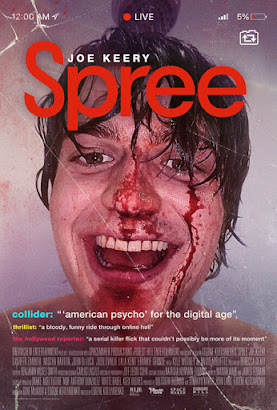Tenet **** / *****
Directed by: Christopher
Nolan.
Time really is the driving obsession behind most of Christopher Nolan’s work. It’s a main point in all of his non-Batman films, and now that I think of it, even there – but in the more traditional sense, in that Bruce Wayne wonders how long he can do this for. I’m not going to traffic in spoilers for Nolan’s latest film – I am acutely aware that I have seen this film before many others (specifically in America) have even had a chance to, and well before many – worldwide – will comfortable going. I often think spoiler-phobes are insane with the degree in which they demand people write about films, giving away absolutely nothing – so if you’re one those, probably stop reading, but if you’re sane, you’ll be fine. But with Nolan, I think perhaps warranted – not because his films are so complex and mysterious, but actually kind of the opposite. Since Memento, Nolan has specialized in making this kind of intricate puzzle box films – Tenet is certainly one of those – but while the first time through any of them you may be confused in the moment, you can also rest assured that (spinning top aside), Nolan is going to wrap everything up in a nice, neat package for you in the end. That’s just the way his mind works. Personally, I like a little more mystery in my films – even at the end. But you cannot deny just the massive amount of technical craft that goes into a film like Tenant, the skill of the performers, or just how well thought out the film is by Nolan. I’m sure someone will come up with plot holes – they always do – but I didn’t see them.
Without giving too much away in terms of plot, let me just say that the film revolves around The Protagonist (John David Washington), who is sucked into a world he doesn’t understand, and tasked with saving the world. He will eventually team up with Neil (a very charming Robert Pattinson), and get involved with the beautiful Kat (Elizabeth Debicki) and her Russian oligarch husband Andrei (Kenneth Branagh) – no points for guessing whether a Russian oligarch is a good guy or a bad guy. I have a feeling that even saying this much will anger people, so I’ll just leave it at that.
On the performance side, you probably cannot expect much more out of the four principle cast members of Tenet. Hell, Washington is literally stuck playing a character called The Protagonist, and he somehow makes it an interesting performance. It may not be a deep performance – none of them are – but the way he struts through a scene, and seemingly effortlessly takes it over on the strength of his charm alone will certainly remind you of his father – and a higher compliment, I find it hard to imagine. Washington surely is a movie star, and if he were British, he may even make the case for being the next James Bond here. Pattinson, who has gone from one indie director to another, delivering fascinating performances, is here back in the blockbuster realm – and he’s equally adept here. He has a roguish charm here – he fits into the world of the film effortlessly in a way that Washington stands out (because of his race). Pattinson, who I didn’t think much of in the Twilight films, has turned into one hell of an actor – and he is terrific here. Much like her male co-stars, Debicki is wonderful here – it’s the film’s most sympathetic role, and she certainly shows that she is a movie star like they do. Branagh has fun with his Russian accent, because of course he does, and he’s quite good as well.
From a technical standpoint, it’s hard to find fault in Tenet – which not only does all the things you expect a Christopher Nolan movie to do well on a massive scale, but even does some things I don’t think I’ve quite seen before. Please note, I seem to be in the minority of people who never found dialogue in any Nolan film hard to hear (seriously people, I understood every word Tom Hardy said in both The Dark Knight Rises and Dunkirk) – but the sound work here is still perhaps the best of Nolan’s career. Hoyte Van Hoytema’s cinematography is excellent, composer Ludwig Goranasson steps in for Hans Zimmer and doesn’t miss a beat. The editing is a definite feat – and the special effects is excellent.
I do think, in the end, Tenet is a film that hit me much like Inception did – perhaps a little less. Both films are certainly complex in terms of their plot and implications – but they are both perhaps so complex that it feels like roughly 50% of the dialogue is explaining what they hell just happened, or what is going to happen. It’s all explanatory – and while the actors make it work, and it’s needed so you don’t get lost – it’s also not the most fascinating thing in the world to listen to (especially, one thinks, a second time through). For all of its faults, there is nothing in Tenet that hit me as emotionally hard as Interstellar did. Much more so than Nolan’s other films, Tenet really does feel like a mathematical equation – a left brain exercise in precision. I admire the hell out of most of what the film does - I just wish it did a bit more.















